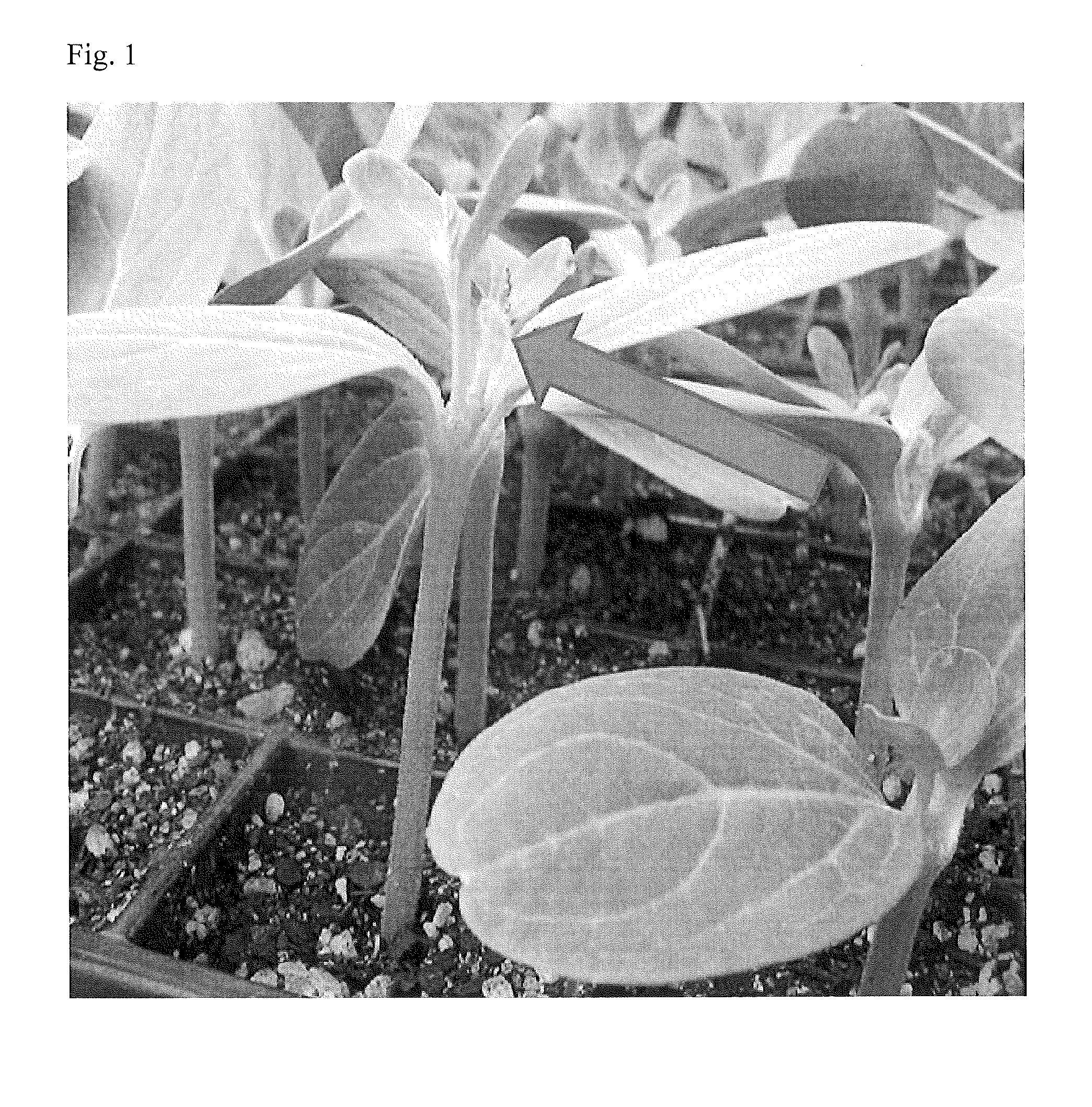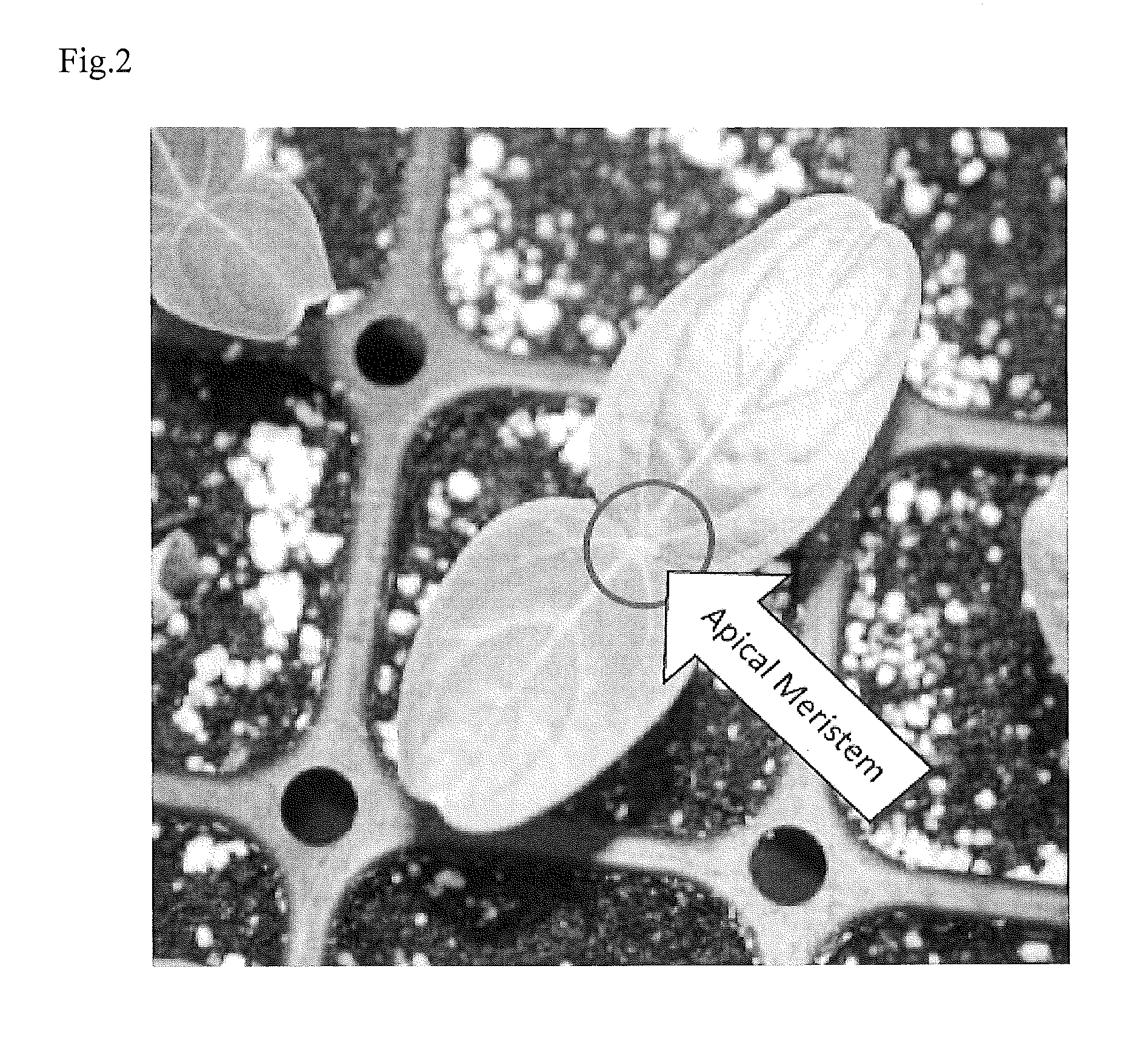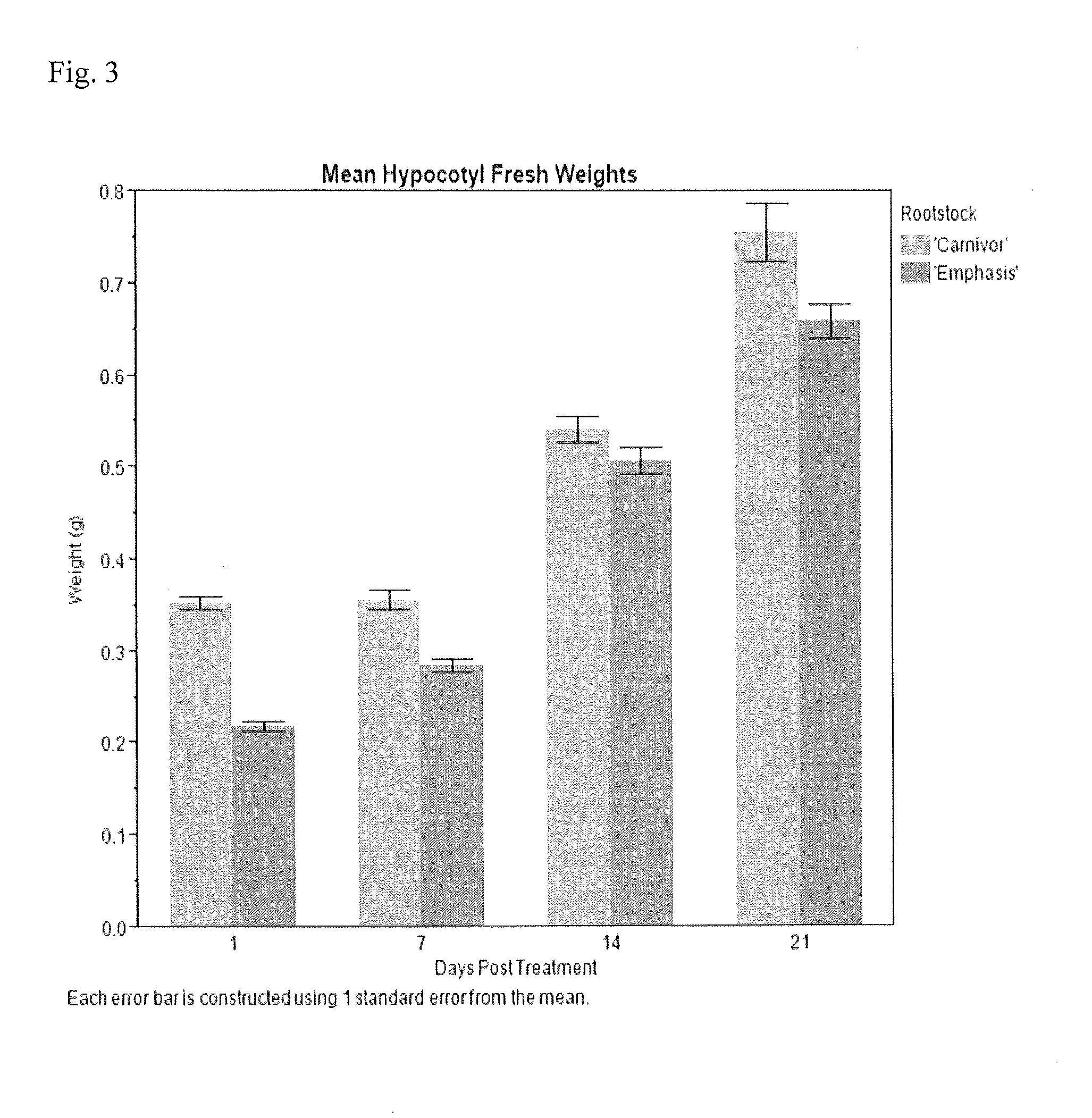Methods and Compositions for the Inhibition of Meristematic Growth on Cucurbit Rootstock
a technology of meristematic growth and composition, which is applied in the field of methods and compositions for inhibiting meristematic growth on cucurbit rootstock, can solve the problems of affecting the development of grafts in transplant production, affecting the productivity of grafted plants, and requiring a skilled, efficient and consistent labor force, so as to increase the grafting success rate of rootstock to scion, and the effect of increasing the grafting success ra
- Summary
- Abstract
- Description
- Claims
- Application Information
AI Technical Summary
Benefits of technology
Problems solved by technology
Method used
Image
Examples
example 1
Inhibition of the Shoot Apical Meristem of Cucurbit Rootstock (Species Here)
[0084]Rootstock plants, bottle gourd (Lagenaria siceraria var. ‘Emphasis’) or interspecific hybrid squash (C. maxima×C. moschata var. ‘Carnivor’), were sown in Fafard 3-b fertilizer-free mix and allowed to germinate. At the point when the cotyledons unfolded, (approx. 5-10 days after seeding) a droplet of a composition comprising fatty alcohols was applied to the shoot apical meristem of the seedling, between the cotyledons, so that the meristem was covered with solution. The fatty alcohol composition comprised a concentration of total fatty alcohols of about 2.3% (volume / volume) and was made by diluting the fatty alcohol product, FAIR 85®, 1:19 or 1:24 with water. The droplet volume was 20 to 500 μL and was applied with a pipette (20-200 μL or 1000 μL volume capability, using plastic tips). Seedlings were watered prior to treatment, to avoid needing to water post-treatment, which can dilute or wash away the...
example 2
Preparation of a Grafted Cucurbit Plant (Species Here) Using a Cucurbit Rootstock Plant from Example 1
[0085]Grafting can be performed at about 1-21 days after a rootstock shoot apical meristem is treated with a fatty alcohol solution. Possible grafting methods include the following: 1) hole-insertion, in which the rootstock meristem is removed, a hole is punched into the old meristematic area with a bamboo needle, and the scion (cut at the end to both sharpen and expose vascular cambium tissue) is inserted into the prepared rootstock; and 2) one cotyledon, where the rootstock's meristem area and one cotyledon are removed, and the cut scion hypocotyl is adjoined to the resulting wound, stabilized with a clip, and allowed to heal. Once grafted, the plants are placed for approximately seven days in a healing chamber under high humidity for about the first 1-3 days, and then gradually decreasing humidity for the remaining days. After about seven days of healing, the grafted plants can b...
example 3
Results of Treating Cucurbit Rootstock Apical Shoot Meristems Using Maleic Hydrazide, Sulphuric Acid or Oryzalin Chemical Means Other than Fatty Alcohol Compositions
[0087]The same rootstock and scion species were used in this example as in Examples 1 and 2.
[0088]Maleic Hydrazide.
[0089]Maleic hydrazide (21.7%; Royal MH-30®; Chemtura Corp., Middlebury, Conn.) at a concentration of about 90 mg / ml was applied to the shoot apical meristem of rootstock plant. The treated rootstock plants were incubated for about 24 hours prior to grafting to a scion.
[0090]Similar to fatty alcohols solutions, maleic hydrozide solutions are used to inhibit tobacco sucker growth. However, in the case of the inhibition of shoot meristem growth in cucurbit rootstock plants, maleic hydrazide was found not only to inhibit apical meristem growth but it was also found to inhibit grafting as no grafts were successful when maleic hydrazide was used. Thus, out of 2016 attempted grafts, 100% inhibition of meristematic...
PUM
 Login to View More
Login to View More Abstract
Description
Claims
Application Information
 Login to View More
Login to View More - R&D
- Intellectual Property
- Life Sciences
- Materials
- Tech Scout
- Unparalleled Data Quality
- Higher Quality Content
- 60% Fewer Hallucinations
Browse by: Latest US Patents, China's latest patents, Technical Efficacy Thesaurus, Application Domain, Technology Topic, Popular Technical Reports.
© 2025 PatSnap. All rights reserved.Legal|Privacy policy|Modern Slavery Act Transparency Statement|Sitemap|About US| Contact US: help@patsnap.com



